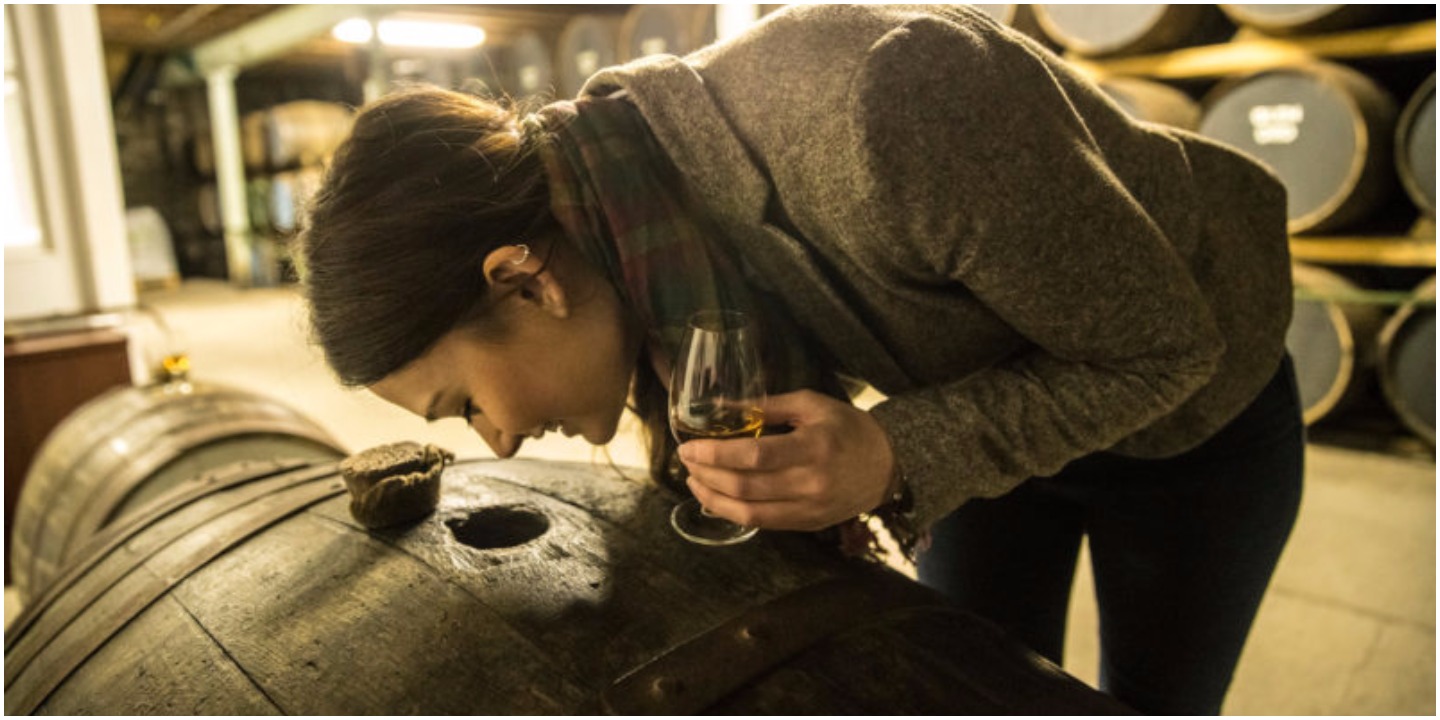Whisky bluff to whisky buff: how to nose whisky (and why it’s important).
Uncategorized
A few months ago, we did another post in the Whisky Bluff to Whisky Buff series that looked at the first steps in learning to taste whisky. (And not just in a ‘oh yeah, that tastes like whisky’ way.)
In that article, we spoke about the importance of nosing your whisky.
We said that learning how to nose whisky is probably the key step in whisky tasting, and the one that you’ll want to practise lots.
We also said that most whiskies are going to reveal their characteristics on the nose right away, and that the taste of the whisky should only confirm what you’d already picked up with your nose.
No pressure, right?
And although we went into a bit of detail on how to nose whisky, we think there’s a lot more to be said. That’s why we’re writing this article.
How to nose whisky: a beginner’s guide
First things first, swill that whisky.
(Like we said before, a glass that’s thinner at the top than the bottom (like a glencairn) is perfect for funnelling those all-important smells up your hooter.)
Once the whisky is in the glass, give it a swill. This releases the aromas of the whisky, and will let you pick out different notes when you nose your whisky.
Easy so far, right?
Don’t get cocky, kid.
Now things gets trickier.
Step #2: Sniff, sniff and sniff again (and, well, sniff once more)
(Before you sniff, here’s a pro tip: keep your mouth open slightly when you’re smelling the whisky. This stops the alcohol in the whisky burning the inside of your nose, which stops you from smelling all of the individual notes.)
Now, there are four stages to this sniffing.
First up, the initial whiff. There’s no real technique to this, it’s a first impressions thing. You should notice any spices or smokiness right away. (They’re often the smells that are hard to ignore. A Lagavulin 16, for instance, whacks your nose with a huge sock of peaty smoke.)
After that comes the trickier part; looking for fruity notes, sweet notes and grainy notes.
Now, these tips are going to sound a little odd, but bear with us and try them out. We work (that’s a Whisky Foundation promise).
For the fruity notes, hold the rim of the glass to your bottom lip, keeping the glass straight. (The glass should rest on your chin.) This helps funnel the fruity smells to your nose, letting you pick out different notes.
To start, think general. Is it citrusy or does it smell like berries? Then try and narrow it down. Does it smell more like lemon or lime? Apples or melon?
Why is this important?
Aha. This is the cool part. Remember when we spoke about the importance of barrels?
Well, if you can detect melon or citrus notes, the chances are your whisky was matured in an American oak barrel, while apricot or peach notes are indicative of a European barrel.
You see? From just detecting a few notes, you’re now able to deduce what kind of barrel it was aged in. Pretty neat, huh?
Next, tip the glass away from you and dip your nose into it. This is where you’ll notice sweeter scents like vanilla or maple.
And guess what, if there’s lots of vanilla, that’s a pretty good indication that it was finished (or aged) in a bourbon cask.
Now look at you, you’ve gone from novice to the Sherlock Holmes of whisky deduction in five minutes. Not bad, eh?
Finally, hold the far rim of the glass to the tip of your nose and sniff. You should be able to narrow down the grain used to make the whisky here – you might smell barley, wheat or just a bread-like flavour.
And that’s it – a short and sweet guide on how to nose whisky.
Sure, there’s much more to it when you step up another level, but look at you now. You can tell your American cask whiskies from your European cask whiskies, without taking a single sip. That’s pretty damn impressive.
(Header image credit: VisitScotland)




Pingback: Iain Burnett Highland Chocolatier: A Delicious Pairing